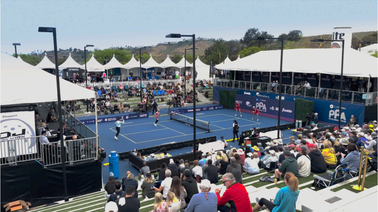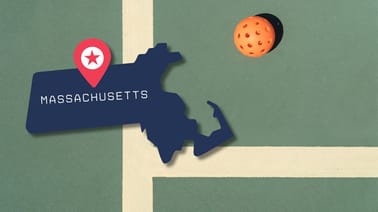
Sports & Fitness Industry Association's (SFIA) research says $900 million in construction costs are needed to keep up with current and future demand.
The report calls for 25,784 courts, well over 2 million square feet. If that seems unreasonably large, consider that's only about 11 Wal-Mart stores.
The bad news? The study also found that the USA's largest cities are far behind in pickleball infrastructure, with New York and Los Angeles 98% below the national average for dedicated courts per 10,000 people (more city rankings here).
SFIA says there were nearly 9 million pickleball participants in 2022, last year. The region that recorded the highest levels of participation is the South Atlantic, with states like Georgia, Florida and the Carolinas.
Those states clocked 1.9 million pickleball players, where the Pacific region had 1.5 million, and East North Central had 1.4 million.

Who can help pay for this?
Venture capital has already stepped foot into the pickleball space, despite some initial hesitancy to accept the industry as a serious sports investment opportunity.
While investment firms are no doubt going to cover some of these costs, there are others in a position to help...
...Two of the pro leagues are owned by billionaires. In fact, Major League Pickleball founder Steve Kuhn – one of the bespoke billionaires – has already branched out into a pickleball facility venture aiming to take advantage of empty mall space:
Other options for funding pickleball court construction:
- Government Grants: Local, state, or federal government entities might allocate grants for sports infrastructure development. These grants could be obtained through parks and recreation departments, community development programs, or sports-related initiatives.
- Nonprofit Organizations: Sports-focused nonprofit organizations, community foundations, or philanthropic entities might offer grants or financial support to fund pickleball court construction.
- Local Businesses: Local businesses have already sponsored pickleball court construction as a way to support community development and enhance their brand image.
- Crowdfunding: Community members and pickleball enthusiasts could pool their resources through crowdfunding platforms to collectively raise funds for court construction.
- Corporate Sponsorships: Companies looking to target an active and health-conscious demographic might sponsor pickleball court construction as a form of advertising and community engagement.
- Land Developers: In some cases, land developers might be required to allocate a portion of their development projects to sports and recreation facilities, including pickleball courts.
It's important to tailor the funding strategy to the local context, community needs, and available resources.
Collaborative efforts involving a combination of these funding sources could help make the construction of pickleball courts more financially feasible and sustainable in the long term.










